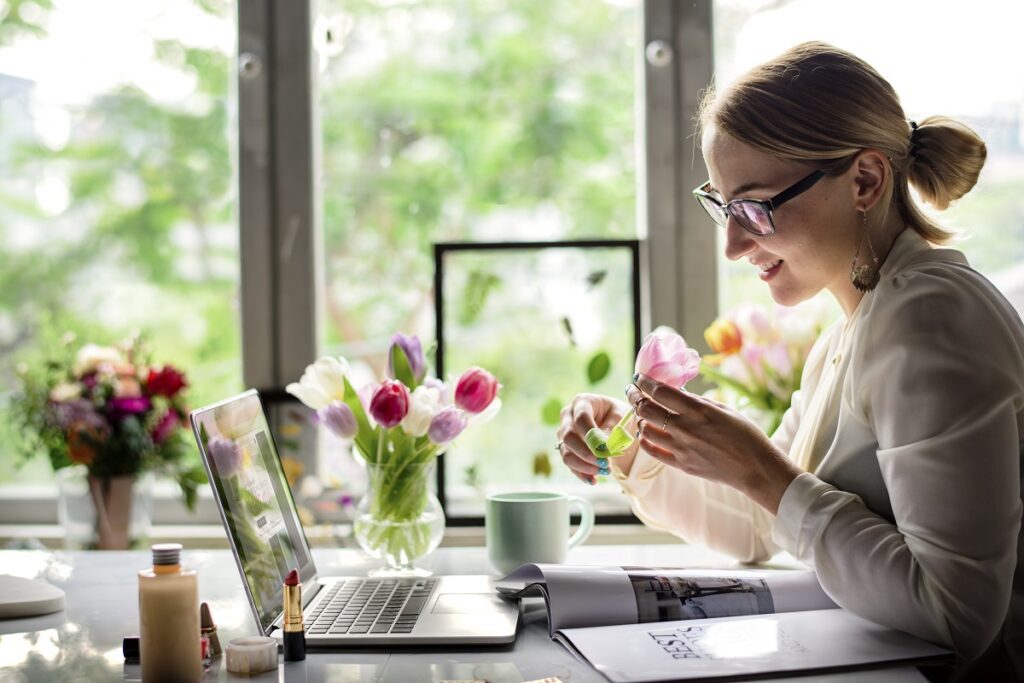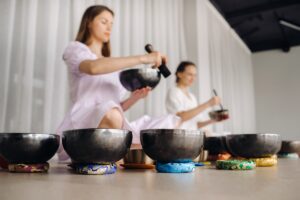We realize the previous several years have been tough for everyone and that finding calm and relaxation may be hard. We’re pleased to provide advice on building a mindfulness nook at home with only seven necessary things.
As we know, mindfulness may decrease stress, increase mental clarity, and boost well-being. Mindfulness may be hard to include into a hectic schedule. With the correct equipment and a little ingenuity, you can create a peaceful area at home to rest and concentrate.
This blog article will help you build a mindfulness space at home with seven necessary objects. We’ll discuss comfortable sitting, strong meditation equipment, relaxing furnishings and paint colors, aromatherapy, meditation literature, and flowers. Each item promotes mindfulness and calm.
Mindfulness benefits all ages and backgrounds. We’ll even reveal how mindfulness helped us through tough times. This should motivate you to establish a mindfulness nook and experience its advantages.
This article is for beginners and experienced meditators. We can’t wait to help you build the peaceful place you deserve! Let’s get started!

Choose Comfortable Seating
Comfortable seating is essential for a home mindfulness corner. If you’re uncomfortable, meditation and mindfulness involve long periods of sitting. To maximize mindfulness practice as an American over 50, make your meditation space pleasant.
A 2013 Journal of Psychiatric Practice research found that a comfortable chair improves meditation. The research indicated that meditators who sat on a cushion felt more calm and focused. This research emphasizes the necessity of comfortable seats in mindfulness corners.
Comfy sitting makes meditation simpler and helps you establish a mindfulness pattern. Uncomfortable sitting makes it hard to sit for extended periods and continue a mindfulness practice. If you have comfy seats, you’ll meditate more often and get the advantages of mindfulness’s stress-reduction and well-being.
With the COVID-19 outbreak and Russia-Ukraine crisis, Americans over 50 must manage their mental and emotional health. Create a cozy mindfulness space at home to relax and find inner peace. To maximize your mindfulness practice, sit comfortably.
Get Some Meditation Tools
Home mindfulness corners may relieve stress and promote inner calm. Meditation may be difficult for Americans over 50. Meditation tools are necessary for novice mindfulness corners. These tools help you relax and concentrate, making meditation simpler to maintain.
Meditation pillows are great tools. These cushions support your spine, hips, and knees, simplifying meditation. The cushions may also minimize pain and promote comfort, letting you concentrate on your breath and relax.
Meditation apps are also effective. These applications include guided meditations, clocks, and other tools to start and sustain your meditation practice. They provide mindfulness, loving-kindness, and beginner-friendly meditation approaches.
Meditation aids in improving relaxation and attention. Meditation cushions let novices sit comfortably. Guided meditations using a meditation app might help you concentrate and improve.
Meditation tools may assist novices in starting a mindfulness practice, but they’re not required. As a 50-year-old American, meditation tools may improve your technique and help you build a mindfulness routine.
Opt for Calming Décor
Use relaxing décor and paint hues for a home mindfulness zone. As an American over 50, you may benefit from a relaxing meditation space.
Color psychology indicates that certain hues relax the mind and body. Blue, green, and purple are soothing colors. In your mindfulness nook, these colors might help you relax and unwind.
For example, blue calms your pulse rate and respiration, simplifying meditation. Meanwhile, green promotes balance and harmony. Purple helps you meditate by evoking spirituality. Plants, stones, and water features may decorate your mindfulness space. These things may help you relax and concentrate on your breath by creating a tranquil environment.
While designing a mindfulness nook, paint colors matter too. White, beige, and light blue give a calm, airy feeling. Taupe, sage, and subdued greens also soothe and ground.
After all, mindfulness is about focusing on your breath and clearing your thoughts. Establishing a relaxing setting can change everything, trust me!
Don’t Forget About Aromatherapy
Home mindfulness corners definitely need aromatherapy – let me explain why.
Aromatherapy promotes physical and emotional health using essential oils. Aromas may soothe, calm, and boost mood.
Here are the most popular relaxing scents to choose from:
- Lavender calms and reduces anxiety. Diffuse lavender essential oil to relax your mindfulness corner.
- Peppermint is another potent fragrance that might boost your meditation focus. Diffuse peppermint essential oil or apply it to your temples with carrier oil.
- Lemon boosts mood and reduces stress. Diffuse or apply lemon essential oil.
A diffuser may fill your mindfulness area with essential oil aromatherapy. Simply dilute essential oils in a carrier oil and apply them to your temples or wrists.
Aromatherapy may help you relax and concentrate during mindfulness meditation, helping you find inner peace. Try various scents to discover what suits you. Aromatherapy may help you relax and de-stress in your mindfulness nook.
Include Meditation Books
Meditation books may teach you about meditation’s philosophy and history, as well as strategies to improve your practice. Here are a few examples I’d highly recommend to beginners:
- Eckhart Tolle’s “The Power of Now” teaches living in the present and letting go of the past and future. It provides daily mindfulness tips.”Mindfulness in Simple English” by Bhante Henepola Gunaratana explains mindfulness meditation. This one focuses on exploring and growing self-awareness.
- Dan Harris’ “10% Happier” recounts his conversion from skeptic to the meditator. Beginners often like its lighthearted meditation approach.
In short, these books may help you find serenity and quiet on your lifetime mindfulness journey. If you’re looking for even more inspiration on the perfect meditation books, please check out my post on 8 Meditation Books That Will Change Your Life.

Get Some Flowers
Flowers were demonstrated to improve our mood years ago. According to a 2015 Journal of Environmental Psychology research by Jeong et al, flowers relieve stress and increase mood. Researchers also discovered that floral scents reduced stress, especially among seniors.
Flowers in your mindfulness corner may help to inspire you too. Lavender, chamomile, and jasmine are common choices. These flowers provide relaxing smells.
In addition, the bright colors and smells may boost mood and enhance all of the positive emotions. Sunflowers and daisies are cheerful, while pastel pinks and blues are tranquil.
Choose relaxing and uplifting hues and smells while picking flowers for your mindfulness space. Different flowers have distinct symbolic connotations. Flowers may help you relax and feel good in your mindfulness nook. Flowers’ relaxing smells and brilliant hues may inspire your meditation practice and link you to nature.
Your Takeaway
You should now see why comfortable seats, meditation instruments, soothing furnishings and paint colors, aromatherapy, meditation books, and even flowers create a tranquil and relaxing mindfulness setting.
Over-50 Americans have endured natural calamities, economic downturns, and political instability. We can control our reactions, but not what occurs around us. Mindfulness may help you remain calm in difficult situations.
Don’t believe us. We’ve described how mindfulness helped us through tough situations and urged you to try it. Spend some time in your mindfulness area each day, focusing on your breath. Be present and calm with our tools.
It may seem difficult to create a mindfulness corner, but remember: it’s not about perfection. It’s about personalizing your area. Be original. If you need support or inspiration, please contact us or look for local or online resources.
This blog article should motivate you to start living mindfully. Mindfulness is a process. Take it day by day and be fair to yourself. We support your mindfulness journey.









